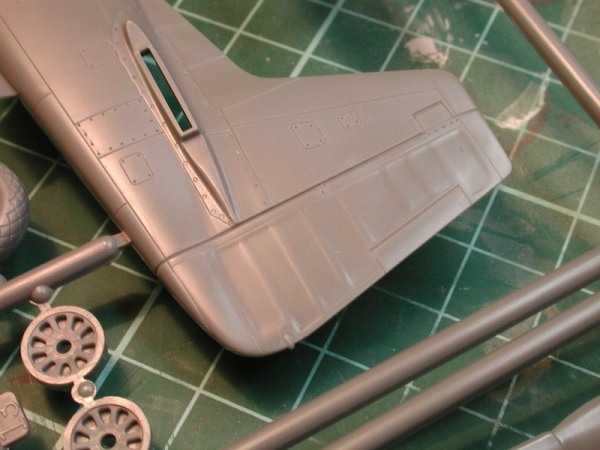Fixing the surface – a challenge worth taking? Read on…
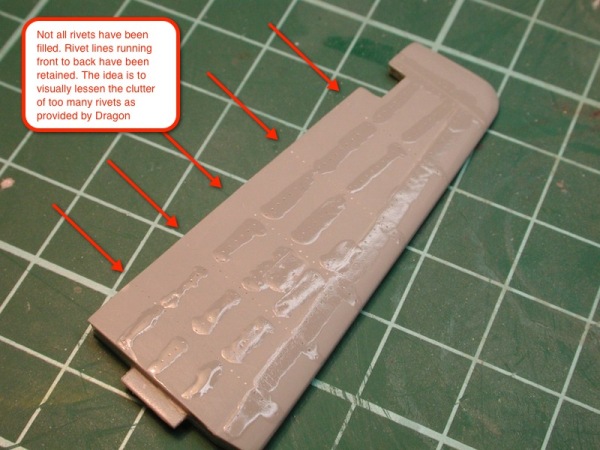
Still having major doubts about the viability of this project, I needed to convince myself one way or the other that all this filling and sanding was worth it. I decided to select one surface of the model and follow all the steps I would need to do just to see what it ended up like. Here we see the port horizontal tail section (minus elevator) and I am filling some of the rivets with super glue.
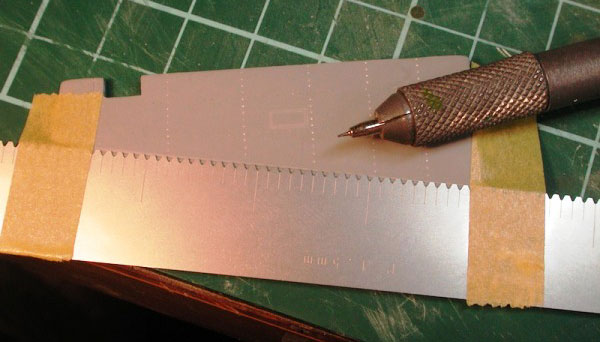
Once the glue was dry (5 mins), I sanded it flush and here am creating new rivets (with different spacing) along the leading edge panel line. I am using one of the Hasegawa TriTools and a compass point to mark the spacing for the new rivets. The tape holds the template in place.
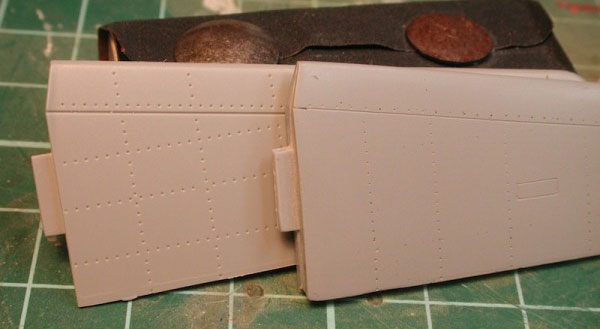
Now under a coat of primer, we see the modified part next to the original Dragon part. Learning a bunch of stuff here about how deep the rivets should be etc which should prove very useful once I go onto tackle the bigger pieces.
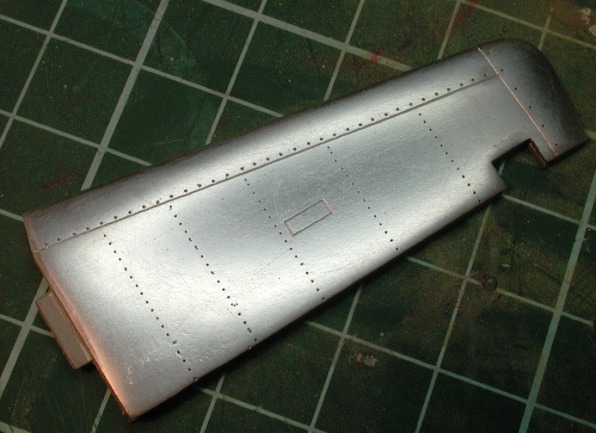
Last step in the process is a coat of Alclad2 Airframe Aluminium to see what it will come out like. I’m content and so the project survives to live another day.
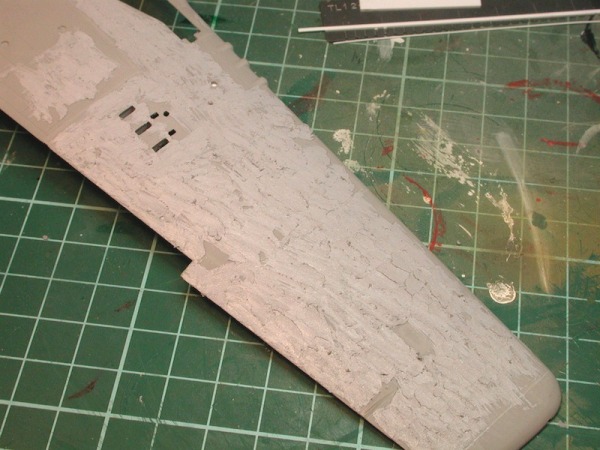
And so onto the monstrous (thanks Dave) amount of work required to fill and sand the rivets on all model surfaces. Here I have bulk-filled part of the wing lower surface with Tamiya Basic Putty.
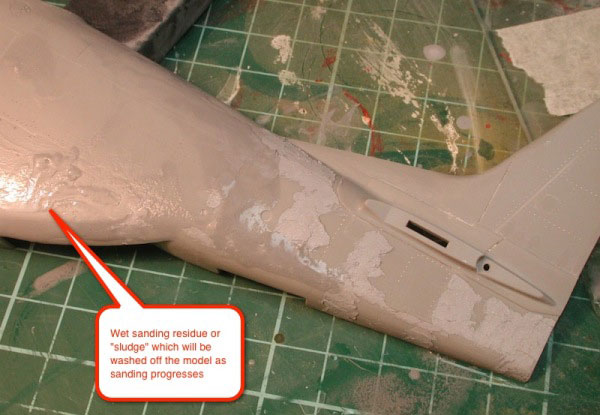
The fuselage has only had selected rivets filled (there are just too many for a 1:32 model imho!) and here I have started the sanding with wet’n dry paper. Notice the sanding sludge on the left part of this photo.
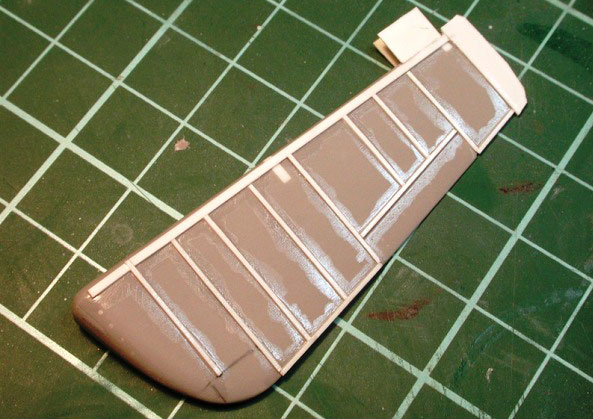
As you can imagine, you get sick of filling and sanding pretty darn quick. Needing a break I turned to the rudder for which I still had not figured out how to best re-create the doped cloth over wooden frame affect. After considering my options (and doing some testing which ended up failing but taught me some things) I decided to re-produce the wooden ribbing using 10×20″ strip plastic. I used reference photos (and the Tamiya 1:48 model) to determine the layout.
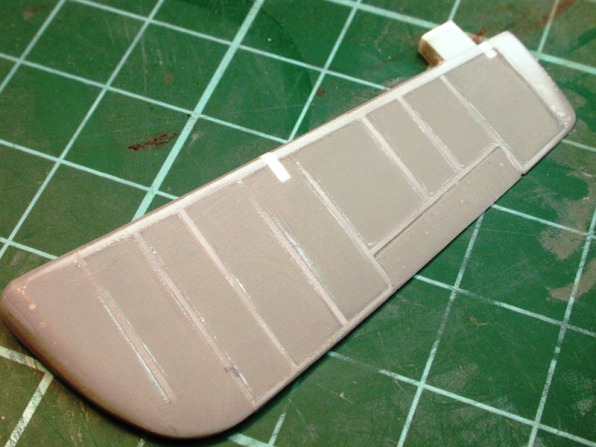
Once dry, some 600 wet’n dry was used to further thin down the ribbing to the point of almost disappearing (in some spots you can see I have in fact rubbed right through).
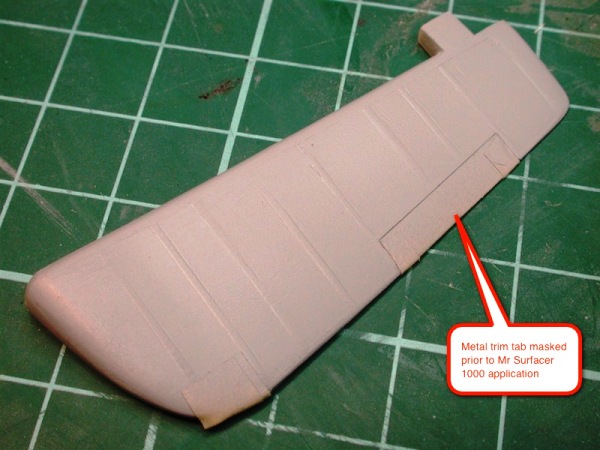
A thinned mixture of Mr Surfacer 1000 was lightly sprayed onto the tail (the trim tab was masked first). Building up several layers gave me the desired effect of cloth stretched over the ribbing. Overall I’m quite happy, with room for improvement next time.
A shot of the Tamiya 1:48 tail to allow you to compare my end result.
